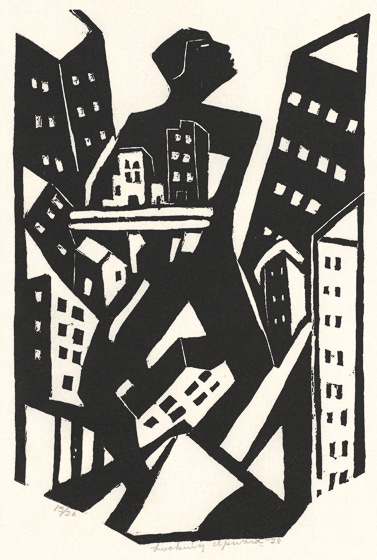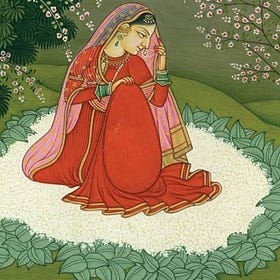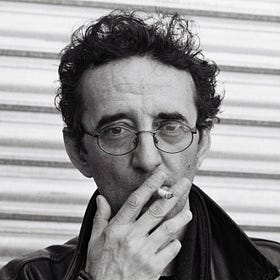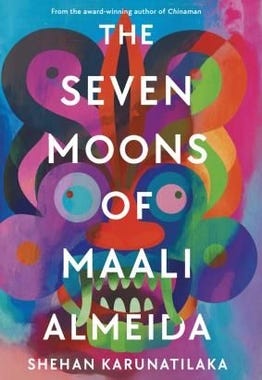James Baldwin and the Harlem Renaissance
Essays, poetry, and art to help contextualize your readings of Black literature
“Don’t let it make you bitter. Try to understand. Try to understand. The world’s already bitter enough, we got to try to be better than the world.”
— James Baldwin, Another Country
Last week, Neha and I discussed Another Country on The Novel Tea Podcast. Briefly, if you haven’t read the book: you must. The long version, in which we analyze and gush over every component, is below (or here on Apple podcasts):
Many months ago, in an early newsletter, we discussed T.S. Eliot’s essay “What is a Classic?” — one of the core messages I have taken away from that work, which I continue to return to, is that a classic exists in a cultural context. It flows forth from other texts in that community, in that country, and in that language.
Whenever I read in clusters, my reading is enhanced. For example, in Season 1 we read The Vanishing Half along with Passing (another incredible work that came out of the Harlem Renaissance), which helped us understand so much about both texts.
And so I have been trying to put Baldwin context — or at least, trying to understand the literary movements that surrounded him, and from which he emerged.
I cannot be comprehensive in breadth, nor can I promise you a detailed exploration of one artist. What I hope is that I can share some authors and works you haven’t yet read, and that these essays, poems, and books help provide you with some context for understanding Baldwin, and other 20th century classics.

In Season 1 of The Novel Tea, we discussed Jazz by Toni Morrison. While Morrison is a more contemporary writer, in Jazz she reaches back to the time of the Harlem Renaissance to write what she reported as her favorite novel.
Jazz is one of the most challenging books I have read. Morrison said that in Jazz, “structure would equal meaning.” I was desperate to understand its structure, looking for a key that would help unlock answers.
Luckily, I discovered the essay “The Characteristics of Negro Expression” by Zora Neale Hurston. In this essay, Hurston, a seminal figure in the Harlem Renaissance, provides the key that I needed. I was interested, in particular, in one section of the essay, ‘Absence of the Concept of Privacy’ in which Hurston describes how all aspects of life, for Black communities, are on display to others.
“The community is given the benefit of a good fight as well as a good wedding. Audience is a necessary part of any drama.”
I got so much more out of Jazz, especially the communal and social aspects, by honing in on this aspect of the novel.
Over the past few weeks, while reading Another Country, I found myself going back to this essay. This time, I was drawn instead to Hurston’s sections on ‘Asymmetry’ and ‘Dancing.’
Hurston writes:
“It is the lack of symmetry which makes Negro dancing so difficult for white dancers to learn. The abrupt and unexpected changes.”
James Baldwin was born in New York in the midst of the Harlem Renaissance, and many of his ideas were in response to, or influenced by, the influential figures who came before him. One of these figures was Langston Hughes, a writer and activist, and one of the earliest innovators in the literary movement called jazz poetry.
Just behold the urgency and emotion in his poem “Harlem”:1
A longer, but more musical and rhythmic poem is “The Weary Blues” — which I encourage you to spend some time with.
Hughes wrote an essay in 1926 titled “The negro artist and the racial mountain”2 in which he describes, among other things, that until a white audience deems a Black artist as ‘worthy',’ they are not given any real importance — a claim that still holds some truth today.
In another section, he echoes Hurston’s thoughts on music and the role of jazz in Black writing:
“But jazz to me is one of the inherent expressions of Negro life in America: the eternal tom-tom beating in the Negro soul—the tom-tom of revolt against weariness in a white world, a world of subway trains, and work, work, work; the tom-tom of joy and laughter, and pain swallowed in a smile. "
I don’t often read essays, but whenever I do, I am astounded at what they can do to my perspective — how they can shift and sharpen the way I think about a novel or work of literature.
I hope this newsletter has inspired you to dive in to these essays, and explore other media from the Harlem renaissance: visual art, poetry, photography, and music.
Further Reading
The Many Lessons from James Baldwin’s Another Country [Lithub]
A Century of James Baldwin [Lithub]
How Toni Morrison Wrote Her Most Challenging Novel [NYT]
Lesser-Known Harlem Renaissance Writers [BookRiot]
The essential Harlem Renaissance reads [Penguin]
— Shruti
What Makes a Book a 'Classic'?
Historically, the “classics” we are familiar with have been prescribed by academics of the Ivory Tower. Dickens, Dante, and Brontë are on most lists, but names from outside the Western world rarely make an appearance.
A Dive Into Latin American Poetry
The Savage Detectives is heavily infused with references to Latin American literature, and poetry plays a big role in the overall plot. This got me into a mini-deep dive into Latin American poetry...
Up Next
Next week we’ll have another James Baldwin-themed newsletter to share. And right after that, you can look forward to a podcast episode on The Seven Moons of Maali Almeida, by Shehan Karunatilaka — the winner of the 2022 Booker prize, this book follows a dead photographer who sets out to understand the circumstances of his death during the Sri Lankan Civil War.
Read Poetry Foundation’s Poem Guide to Harlem by Langston Hughes
This essay is not very long, and can be easily read while on the Subway or waiting in line for coffee. I encourage you to check it out when you have a few moments.








